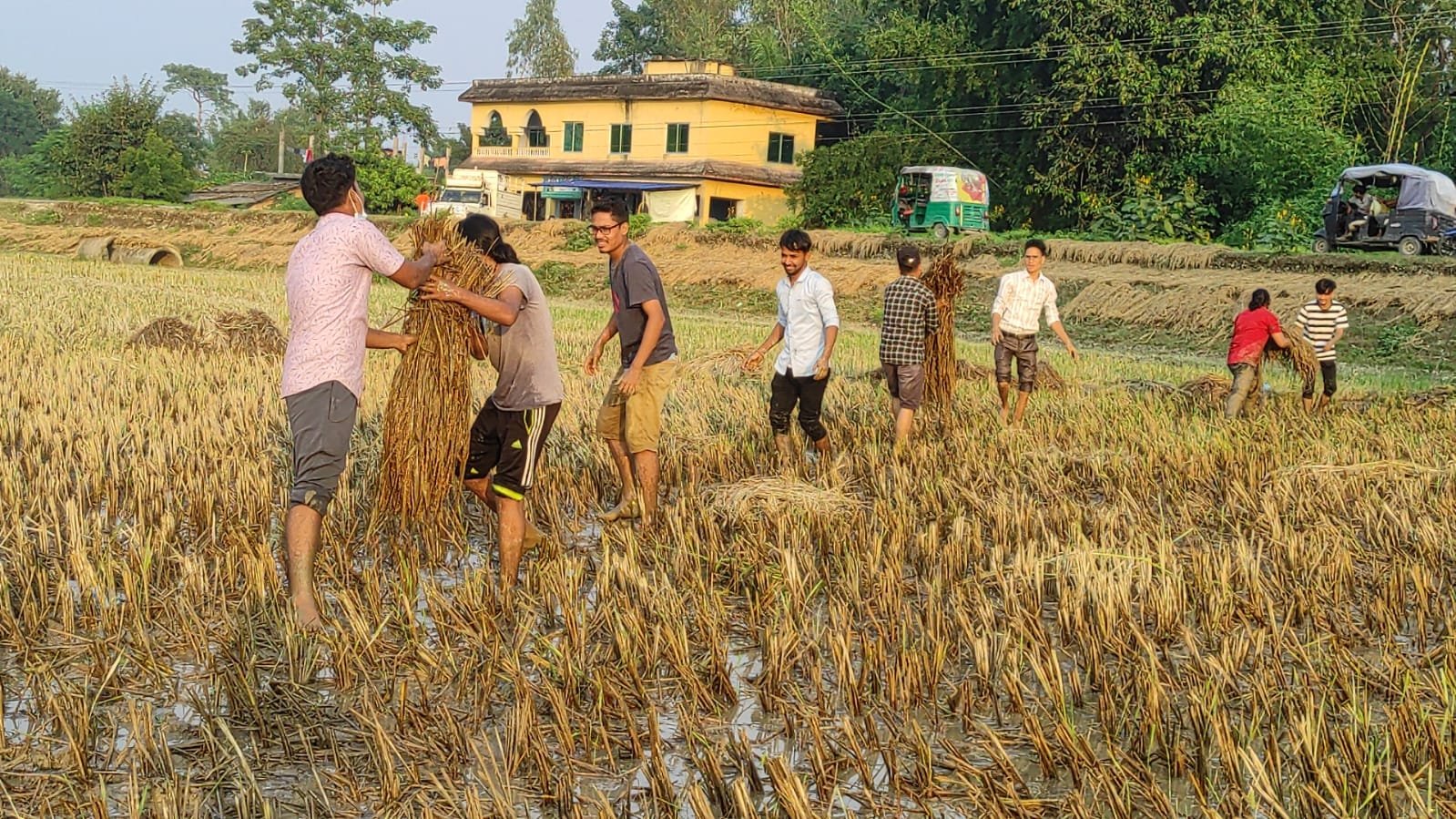Mobilizing youth, government, and farmers to recover from heavy flooding in Nepal
A few days after Diwali festivities had quieted down, I spoke with Madan Poudel and Prashant Giri, farmers, and host team members of the SGM-Collective Impact program (SGM-CIP). After a casual chat about sweets and family cooking schemes, we dove into another event that had recently required the community's attention. While Diwali is a celebration of light and victory over darkness, this regional action was focused entirely on recovery after untimely flooding, which took a devastating toll on lives and livelihoods across Nepal and Northern India.
Beginning on October 17, post-monsoon rainfall destroyed many harvested and harvest-ready paddy crops, taking over 150 lives and impacting the subsistence of countless farmers. The flooding damaged 111,000 hectares of land across several districts of Terai, including Sudurpaschim, Lumbini, Karnali, and Providence One.
As an emergency response, Nepal Food, a local collective, mobilized 100 students, government leaders, citizen-led networks, and volunteer farmers from throughout the region. Together with 50 affected farmers, this team worked in the fields to recover nearly 50 hectares of land.
“We mobilized in a very quick manner,” said Prashant Giri. “If we can continue to work as a collective, we can make a huge impact. This campaign has been an example of what happens when we engage multiple sectors and other networks.”
Nepal Food addresses crises such as global pandemics and natural disasters. In addition to mobilizing around action, they aim to contribute creatively to a national dialogue around the future of food to achieve resilient and sustainable food systems.
People living in Nepal are currently experiencing the drastic implications of the pandemic and climate disaster. Nepal is affected by the unjust paradigm of contributing very little to climate change (with CO2 emissions at less than 0.29 metric tonnes) but experiencing the worst of its consequences. When disaster strikes, strict government bureaucracy, and other factors can hinder funding access and resources.
“Building the capacity for this collective to mobilize in the field is our top priority,” Madan reinforced. From ideating around local blockchain to combat bureaucracy and funding bottlenecks to responding to the widespread local action, the work of this collective can take many forms. “This was an emergency response, but the main point of Solidarity Farmer is to make sure we are resilient in every way.”
To create conditions from which communities are prepared for an unforeseen crisis is no easy feat. Aligned with the framework of the global SGM-CIP, it requires deep listening, doing, reflecting, and refining.”
“Solidarity Farmer, like Nepal Food, is a constantly emerging project, and we are building blocks on it always from our learnings,” notes Madan. “In a broader sense, it's not only our initiative; we want to co-own this. This is a collective project that the government can buy into, other networks of farmers can buy into, and others.”
When asked about the value of being part of a global community of practice, Madan responded, “every local context is different, and I really value that by taking local action, we are making a difference on a global scale.”
Despite being sandwiched between the realities of COVID-19 and the climate crisis, these actions remind the world of the power that communities have when mobilizing their assets to support themselves, building local networks of solidarity that promote autonomy.
“Nepal and the farming culture here is a gift economy. People share things, they share stories, they share emotions, they share labor. It's a culture of welcoming; this is a big asset. People are willing to work as farmers, and this is what we are proud of and what informs our work.”
To learn more about Nepal Food, Solidarity Farmer, or lend your support to the initiative, visit www.nepalfood.org.


